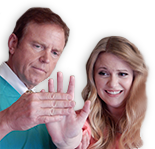Does Cold Weather Make Carpal Tunnel Worse?
Carpal tunnel syndrome restricts blood flow to the hands, making them feel chronically cold even in mild temperatures. Cold weather further restricts blood flow and can indeed make carpal tunnel syndrome worse.

By Doctor Michelle Robin, DC Wellness Expert, Founder of Your Wellness Connection, Naturopath

Does Cold Weather Make Carpal Tunnel Worse?
Carpal tunnel syndrome restricts blood flow to the hands, making them feel chronically cold even in mild temperatures. Cold weather further restricts blood flow and can indeed make carpal tunnel syndrome worse.

By Doctor Michelle Robin, DC Wellness Expert, Founder of Your Wellness Connection, Naturopath

Yes, cold weather makes carpal tunnel syndrome worse
Cold weather often leads to cold hands. This is especially true for people with carpal tunnel syndrome.
As winter approaches and the mercury drops, it’s normal for those with carpal tunnel syndrome (CTS) to experience more pain and discomfort. For those that already experience extreme discomfort due to the condition, the additional cold weather can worsen symptoms, leading to sleepless nights or days spent in bed.
The same pressure that builds up and pinches the median nerve in the carpal tunnel also puts pressure on blood vessels in that area, restricting blood flow. With limited blood supply, hands get cold quickly, especially in cold weather.
Good blood circulation is the key to natural healing and dispersion of lymphatic fluids. When your hands are cold, the blood vessels become narrower and limit blood circulation. This is a normal response of the body to conserve heat. When a person already has restricted blood circulation due to carpal tunnel, the addition of cold temperatures causing cold hands makes CTS much worse. It’s cyclical. One contributes to the other.

The connection between carpal tunnel pain and cold weather
Nerve conduction studies show that nerve response slows in cold temperatures, which validates the effect of cold weather on any nerve condition.
Most people intuitively know that cold temperatures intensify pain in any part of the body. This is especially true when a person moves suddenly from a static position when the joints or muscles are cold.
There’s a reason athletes warm up, slowing bringing their muscles and soft tissue up to game-speed temperature. Muscles and soft tissue that are warm are more flexible and ready to perform at a high level.
Scientists aren’t in complete agreement about the weather causing or worsening pain. But there are some theories that could explain why people say their pain worsens with damp, cold, rainy weather.
One leading theory points to changes in air pressure as a storm front moves through an area. This air pressure is measured as barometric pressure and refers to the weight of the atmosphere that surrounds us.
Barometric pressure does change and can affect people’s bodies. Some evidence supports the concept that a sudden change in barometric pressure can induce labor in women in the later stages of pregnancy!
When barometric pressure drops before a storm, it can also cause the soft tissue to expand and put more pressure on a joint—or, in the case of CTS, on the median nerve. In winter, there are usually more storms and hence more variations in barometric pressure.
So what can be done to manage cold weather and carpal tunnel flare-ups?

Seven tips for managing carpal tunnel syndrome in cold weather
If you’re concerned that your carpal tunnel syndrome may be getting worse in cold temperatures, you can take the following steps to lessen the symptoms.
- Wear gloves or mittens in winter weather to keep your hands protected from the cold.
- Use hand warmers if you’re out in the cold for a prolonged time.
- Move and stretch your arms, hands, and fingers regularly to keep blood circulation consistent, even while watching TV, surfing the net, reading, or just relaxing. Any movement promotes blood circulation.
- When you’re indoors, make a point of getting full-body aerobic exercise that suits your fitness level to further increase your circulation.
- If you’re using a computer on the job or at home, try to work near a source of heat, such as a space heater or fireplace, if one is available.
- Do gentle daytime hand stretches when your hands are warm. Ease into the movements slowly. Some stretches and hand exercises do more damage than good. We can guide you through stretching, suggest specific effective exercises, and tell you which exercises not to do. Email us at [email protected] and put “daytime hand stretches” in the subject line of your message.
- Order The Carpal Solution stretching treatment and have it on hand as the winter months begin. You’ll be ready to treat CTS proactively before it causes you to drop activities and lose sleep. The Carpal Solution is the easy way to keep carpal tunnel symptoms in check during the winter or anytime.
In general, keep moving, keep your hands warm, and use The Carpal Solution stretching therapy while you sleep.
Is icing for carpal tunnel syndrome effective?

Speaking of cold hands, some people ask whether they should be using ice for carpal tunnel syndrome treatment. It’s true that icing can be an effective aid in healing and calming the swelling of the injured soft tissue around the carpal tunnel. The injured tissue causes the pressure to build up and pinch the median nerve.
A reasonable schedule for icing CTS would be 15 to 20 minutes, two to three times a day at most. After that, you reach the point of diminishing returns with icing. Also, recent studies have shown that alternating ice therapy and heat therapy is a more effective way to treat inflammation because it enhances circulation and generates a sort of body pump to keep blood moving while calming the injured tissue.
If you decide to try icing therapy, start by completely submerging your hands in warm water for 2 minutes. Follow by completely submerging your hands in ice water for 2 minutes. Alternate every 2 minutes for up to 20 minutes.
What should you do now?
Carpal tunnel syndrome shouldn’t be taken lightly, as it can be debilitating to the point of being painful. In short, cold temperatures can exacerbate carpal tunnel syndrome but don’t actually cause the condition. If you do suffer from carpal tunnel syndrome and already have symptoms when it’s cool outside, you’ll want to make an effort to keep your hands warm during the winter months.
If you’re experiencing severe hand pain and numbness, we encourage you to seek professional help as soon as possible. A doctor or physical therapist can provide additional tips and tricks, such as wearing a brace or performing certain exercises, to facilitate healing. This can give you greater comfort and mobility if you do have or get a diagnosis of CTS.
 Created by renowned Harvard health care professionals.
Created by renowned Harvard health care professionals. 



